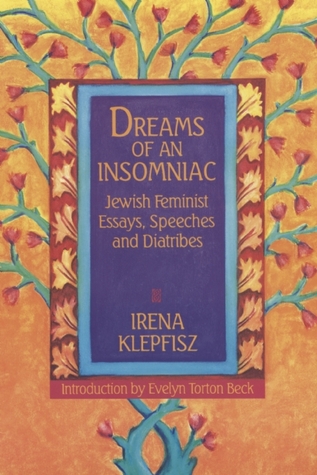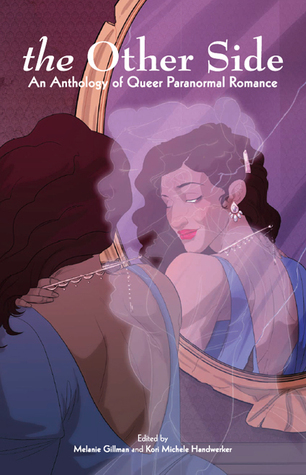I love reading about relationships, sex, and queer women. I especially like to read about lesbian marriage, since I’m one of the only women I know who’s married to a woman. I was incredibly excited about Lesbian Marriage: A Sex Survival Kit. Written by a married lesbian couple who have been together for nearly thirty years, I thought this book would offer unique insight and be fun to read. Sadly, Lesbian Marriage was an exercise in disappointment, starting with the title. “Kit” implies something along the lines of a workbook, with activities or writing exercises to complete. I was eager to try these but other than a few lines in the three chapters of introduction, there weren’t any activities or exercises for readers. The rest of book breaks down into twelve chapters about different relationship challenges, each beginning with a story of a queer woman or couple, followed by the authors’ thoughts on the story, then a list of “Do’s” and “Don’ts,” a weird illustration, and occasionally a blank page with “Notes, Scribbles, Doodles” written across the top. The authors called the advice section a “Toolkit” for reasons I didn’t understand. It turned out to be one of many things I didn’t understand about this book.
Clocking in at just 138 pages, and more than a dozen of these blank pages or tangentially related illustrations, there isn’t a lot of meat this book, and none of the topics go very deep. Chernin and Stendhal picked twelve topics to explore, with no explanation for why they selected these particular issues. Some of these, like extramarital desire or the impact of grudges on your sex life, seem pretty universal. Others, like a chapter called “The Genital Corset” (which is not as interesting as it sounds) about a woman who is mad at her partner because the partner doesn’t have orgasms with her, were overly specific. Meanwhile, topics I expected—like body image, identity, pregnancy and parenthood, disability and health issues, STIs, BDSM, non-monogamy, and past abuse and sexual assault—were either not addressed or presented in bizarre extremes. Lesbians raising children appear only in the story of a couple living in a two-bedroom house with their four adult daughters, two of the daughters’ partners, and a grandchild. None of the couples in the household had the privacy they needed, obviously, and this had a negative impact on all the couples’ sex lives, but the story was so over the top that I had trouble applying the lessons from the chapter to my own life.
In a chapter called “Butch and Femme: The Habit of Roles,” the couple discusses their difficulties around their elaborate sexual role play, but the role of power dynamics in a marriage is barely examined. Despite the chapter title, butch and femme identities are simply treated as synonyms for “top” and “bottom” respectively. As a femme this reductionism bothered me. I think the authors were using this story to make a point about getting stuck in limited roles, but conflating this with the identities of butch and femme was not helpful, and I was unclear how the couple was actually resolving the tension in their relationship.
I also didn’t understand how the authors found the couples in this book. Often the authors described these stories as being reconstructed from “listening sessions,” but never explained what a listening session is. Are they therapists writing about their patients? Are these their friends? Couples they found while researching the book? They gave no context to the couples, and sometimes didn’t even give the women names, which was confusing.
The strongest stories were about Chernin and Stendhal’s relationship, including their powerful tale of weathering Chernin’s affair with a younger woman. However, nearly every Chernin/Stendhal story describes a way their relationship either improved or works well, and most of the other couples’ stories seem to show people who are doing things wrong and struggling. It read to me as smugness from the authors, rather than real illustrations of lesbian couples who worked out challenges in their marriages.
I had trouble determining who the intended audience was supposed to be. Some chapters seemed aimed at older, long-time partners, while others seemed focused on women in new relationships deciding whether or not to commit to marriage. One chapter was about young single queer woman who was ambivalent about the concept of marriage entirely. None of it seemed aimed at a queer newlywed like me. This might explain why I heartily disagreed with some of their “Toolkit” advice. I found it irritating that they offered up prescriptions about marriage that left no room for a differing philosophy of relationships, while presenting them in a “Do” and “Don’t” list that didn’t explain why they’d come to these conclusions.
Their advice sometimes contradicted other advice they’d given. In early chapters, they tell readers to make sex a priority even if you’re busy or not feeling especially sexual. Later they present the story of a woman who wants a sexless marriage, though her wife does not, as a jumping off point for assuring the reader that it’s okay to stop having sex if that’s what you want. They offered no suggestions for the partner who didn’t want or expect a sexless marriage, or when to make sex a priority and when to embrace celibacy. Desire discrepancy is very common, and I expected them to address it with a little more consideration and creativity in a book with the words “sex survival” in the subtitle.
Their conclusions didn’t always seem to line up with the story they chose for the chapter either, with frustrating results. One of the most obvious examples of the authors missing the point of the story was a chapter about a cisgender woman who is uncomfortable that her boi partner is considering transitioning and/or having top surgery. The couple is also debating getting married, but the woman—the only half of the couple we hear from—does not want her partner to transition or identify as male. Chernin and Stendhal use this story to tell readers that marriage does not fix your relationship problems. It seemed to me that the issue wasn’t this at all, and the woman’s concern was about signing on for a marriage with someone whose self-identification and appearance might change. She was quite ignorant about trans and gender variant people too, which was putting strain on relationship with a gender variant (and possibly trans) partner. The authors could have used this story to make a broader, yet relevant, point if they’d acknowledged that one of the scary things about marriage is that you committing to someone who you know will grow and change–and that you’ll change too. You don’t get a guarantee who either of you will be in twenty years let alone what you’ll look like, which is something every married person wrestles with. Or the authors could have focused on the genuine, specific concerns around gender in a useful way. As far as I know, there isn’t a book about how to be a decent partner to someone who is gender variant and/or trans (if there is, please let me know in the comments!). A book like that is sorely needed, and this story could have been followed up with thoughtful, appropriate, and helpful advice on the subject. Instead, the authors seemed like they hadn’t read the story. Plus the woman used some transphobic language in the story that could have been edited out or responded to by the authors, but was simply glossed over. I was disturbed that the woman’s partner wasn’t given an opportunity to speak. It was a pretty raw story, and wasn’t handled with the care it warranted.
Similarly, the story in a chapter about not holding grudges featured an interracial couple from different class backgrounds. The conversation with peppered with microaggressions from the wealthier white partner, and the authors didn’t challenge these comments or discuss the impact these might be having on the relationship. Even when the woman of color called her partner out on a particularly racist comment, Chernin and Stendhal didn’t back her up, which make me lose respect for them. It was pretty clear to me from reading this story that the problem wasn’t just about holding grudges. The white woman was hurting her partner over and over and failing to acknowledge it, and it was destroying their relationship. How could the authors present themselves as experts without seeing this? Chernin and Stendhal chose these couples to write about, and chose to include problematic comments, so they should deal with what these couples said. The fact that they didn’t is troubling.
Occasionally this book has common sense advice, but you can find common sense relationship advice on Autostraddle or in the partnership chapter of The Whole Lesbian Sex Book, with more suggestions for putting it into practice. Skip Lesbian Marriage.




Nat says
Sorry it was such a disappointment, though now I want to read a book about all the things you mention that this book doesn’t deal with!
Widdershins says
As I was reading your review I thought to myself, “Self, do you suppose this is a work of fiction? That the only ‘real’ couple in this book are the authors?” … Cos that’s what this reads like, especially without any detail about their research methodology.